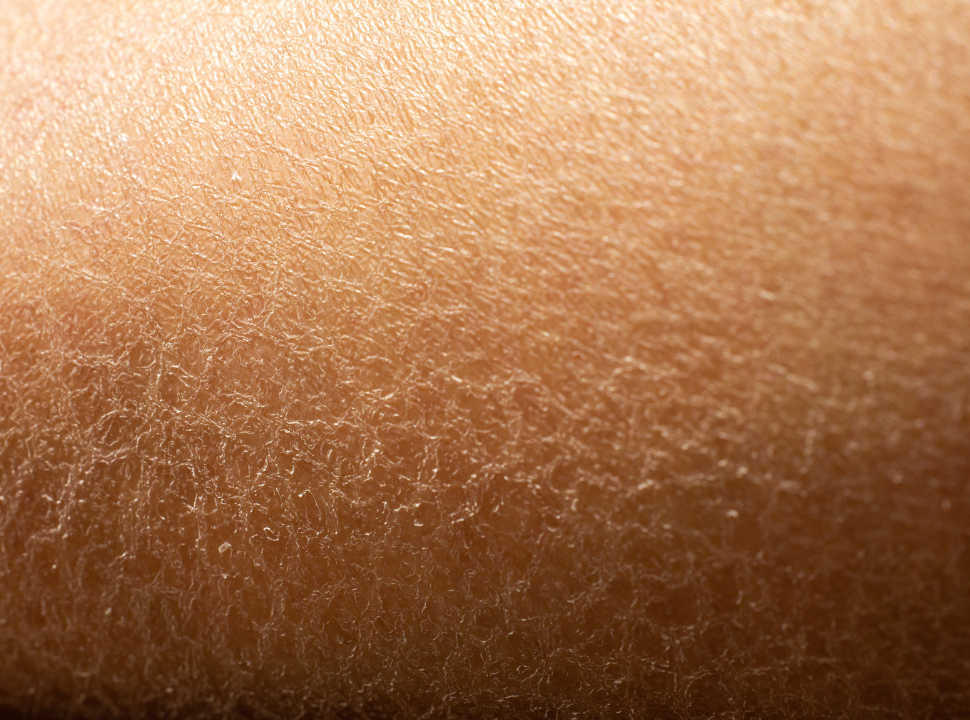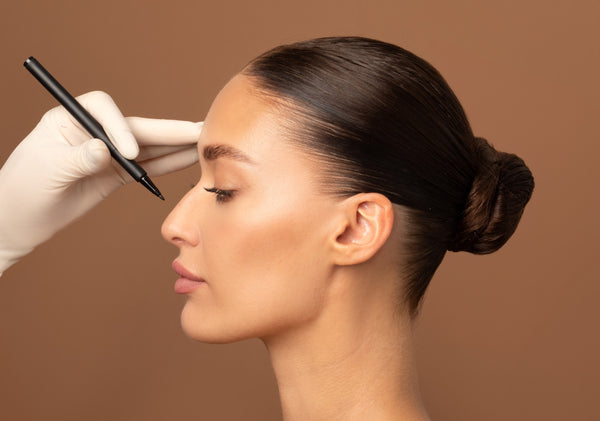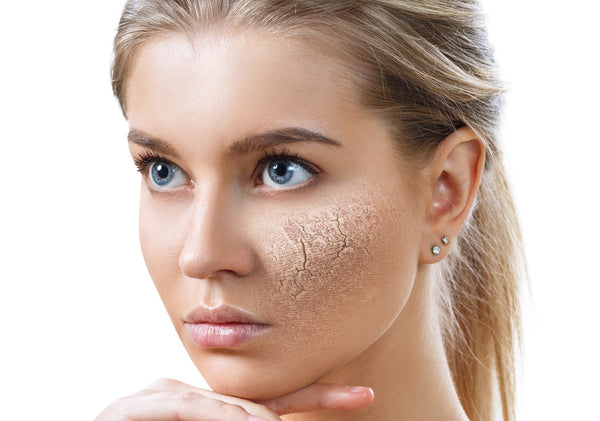How to Nourish Dehydrated and Dry Skin

Having dehydrated and dry skin can be difficult to manage. It requires special attention in order to get the best results. Fortunately, there are a few simple steps you can take to help nourish your skin and keep it looking and feeling its best. Read on for a step-by-step skincare routine for those with dehydrated or dry skin.
Before we dive into the steps you should take to combat dehydrated and dry skin, it’s important to understand how and why your skin gets irritated and flaky. Although both dehydrated and dry skin shares the commonality of being uncomfortable, surprisingly they are both vastly different.
What is Dehydrated Skin?
Dehydrated skin is a common skin concern that can be caused by a number of factors, including weather, diet, and skincare products. It’s a common skin issue that can affect anyone, regardless of age or skin type. It happens when your skin lacks adequate water and leads to various issues like tightness and dullness. Sometimes dehydrated skin can be mistaken for dry skin; however, dehydrated skin is actually the result of a lack of both water and oil. Dehydrated skin requires hydration from both inside and out, which involves drinking plenty of water and using skincare products with a combination of humectants. Humectants are ingredients that draw water into the surface layers of skin, leaving it looking inflamed hydrated, and healthy. By finding the right balance between hydration and nourishment, dehydrated skin can be easily managed.
What is Dry Skin?
 Dry skin is a different skin concern that is characterized by a lack of oil production and a result of a lack of water in the upper layers of the skin. It's characterized by flaky, itchy, and sometimes cracked skin, and can be caused by a variety of different factors such as dry winter air or frequent hot showers. The best way to keep dry skin under control is with adequate hydration. Drinking plenty of water helps to replenish moisture lost from dry environments while using moisturizing creams can provide additional protection that locks moisture into dry areas of the skin. Taking care of dry skin doesn’t have to be difficult – taking a few extra steps each day to properly hydrate the body and moisturize dry areas is all it takes.
Dry skin is a different skin concern that is characterized by a lack of oil production and a result of a lack of water in the upper layers of the skin. It's characterized by flaky, itchy, and sometimes cracked skin, and can be caused by a variety of different factors such as dry winter air or frequent hot showers. The best way to keep dry skin under control is with adequate hydration. Drinking plenty of water helps to replenish moisture lost from dry environments while using moisturizing creams can provide additional protection that locks moisture into dry areas of the skin. Taking care of dry skin doesn’t have to be difficult – taking a few extra steps each day to properly hydrate the body and moisturize dry areas is all it takes.
Both dehydrated and dry skin can be managed with the following tips:
Step 1: Cleanse With a Gentle Cleanser
 Avoid using harsh soaps or cleansers that strip the skin of its natural oils. Instead, opt for a gentle, hydrating cleanser that will clean the skin without stripping it of its moisture. Cleansing your face with a gentle cleanser designed specifically for dry or dehydrated skin. This type of cleanser helps remove impurities without stripping away the natural oils that are essential for keeping your skin hydrated and healthy.
Avoid using harsh soaps or cleansers that strip the skin of its natural oils. Instead, opt for a gentle, hydrating cleanser that will clean the skin without stripping it of its moisture. Cleansing your face with a gentle cleanser designed specifically for dry or dehydrated skin. This type of cleanser helps remove impurities without stripping away the natural oils that are essential for keeping your skin hydrated and healthy.
Step 2: Exfoliate Regularly
 Exfoliating is an important part of any skincare routine, but especially so when dealing with dry or dehydrated skin. You should look for an exfoliant that contains ingredients such as lactic acid, glycolic acid or salicylic acid, as these all help to slough off dead skin cells while still being gentle enough not to irritate the delicate balance of your skin's natural oils. Be sure to exfoliate no more than twice per week in order avoid overdoing it and causing further irritation or dehydration.
Exfoliating is an important part of any skincare routine, but especially so when dealing with dry or dehydrated skin. You should look for an exfoliant that contains ingredients such as lactic acid, glycolic acid or salicylic acid, as these all help to slough off dead skin cells while still being gentle enough not to irritate the delicate balance of your skin's natural oils. Be sure to exfoliate no more than twice per week in order avoid overdoing it and causing further irritation or dehydration.
"When I formulated the MD Glam Exfoliating Enzyme Scrub, it was really important for me to make something that I felt was gentle. I wanted it to effectively remove the dead skin cells helping to open my pores and really giving me a satiny-smooth clean feeling." proclaims Dr. Cat Begovic, MD Glam's founder.
Step 3: Use a hydrating serum or cream:
 Apply a hydrating serum or cream to the skin after cleansing and before applying moisturizer. Look for products that contain hyaluronic acid or glycerin, which are both ingredients that help to attract and retain moisture in the skin. Water retention is crucial for hydrated, plump, and replenished-looking skin. Opting for a night cream that protects against moisture loss like our Hyaluronic Acid Night C-Complex is vital—especially during cold winter months.
Apply a hydrating serum or cream to the skin after cleansing and before applying moisturizer. Look for products that contain hyaluronic acid or glycerin, which are both ingredients that help to attract and retain moisture in the skin. Water retention is crucial for hydrated, plump, and replenished-looking skin. Opting for a night cream that protects against moisture loss like our Hyaluronic Acid Night C-Complex is vital—especially during cold winter months.
Step 4: Use a Humidifier at Night
A humidifier can help to add moisture to the air, which can in turn help to hydrate the skin. Using a humidifier at night can help keep your skin hydrated throughout the reparative night shift. Make sure you place the humidifier near your bed so that you can get the most benefit from it while you sleep. Also, be sure to clean the unit regularly according to the manufacturer’s instructions in order to prevent bacteria buildup that could cause further irritation or infection on your skin.
If you have dehydrated or dry skin, it is important to choose skincare products that are specifically designed for these concerns. Look for products that are labeled “hydrating” or “moisturizing,” and avoid products that are labeled “oil-free” or “non-comedogenic,” as these products may actually further dry out the skin.
Conclusion:
Now that we know the difference between dehydrated and dry skin, as well as some of the causes and symptoms of each, you might be feeling a little overwhelmed. But don’t worry, we’ve got you covered. At MD Glam, we have a variety of effective and easy-to-use products to help combat both types of skin concerns. And our team of experts is always available to answer any questions or help you find the right product for your unique needs. So what are you waiting for? Explore our shop today and get on the path to healthy, hydrated skin.












